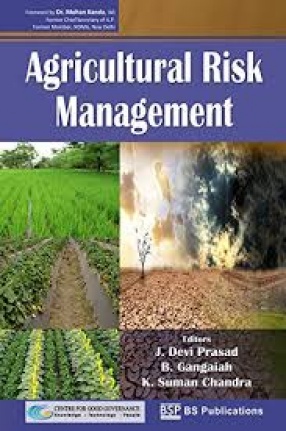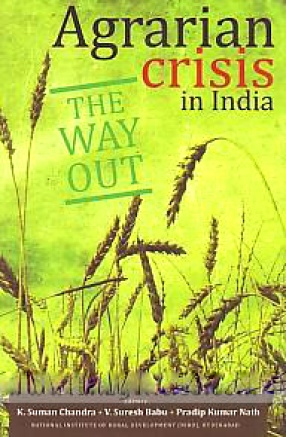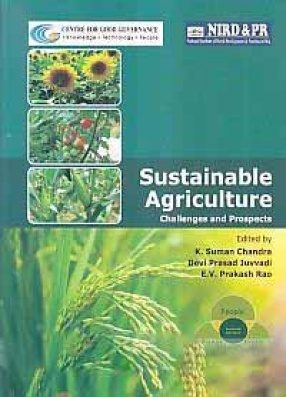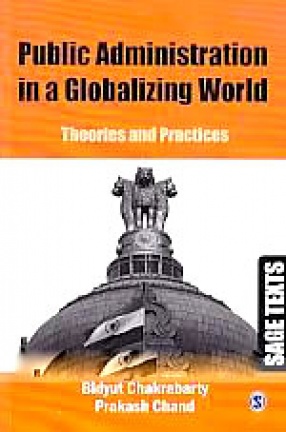Agricultural Risk Management
Weather forecasts are probabilities and projections based on improved technologies but not reachable to many small and marginal farmers. But still vast majority of the people in the country continue in farming with a hope that they would get better production and better prices. Agriculture continues to play a major role, in spite of declining share in India’s overall economy. Even today, as we entered the new millennium, the situation is still the same, with almost the entire economy being sustained by agriculture, which is the mainstay of the villages. Although agriculture contributes less than 15% of India’s GDP, its importance in the country’s’ economic, social and political fabric goes well beyond this indicator. The rural areas are still home to 75 percent of the India’s 1.2 billion people, a large number of whom are poor. Most of the rural poor depend on rain-fed agriculture and fragile forests for their livelihoods. Agricultural risk is associated with negative outcomes that stem from imperfectly predictable climatic and price variables. Weather and climate are major risks and uncertainty factors impacting agriculture production. Market risk is due accessibility of inputs, uncertainty of prices in buying inputs, selling farm output, dairy and livestock products etc.
Risk management is very critical to the success of agriculture, and yet there is a lack of tools used to manage risk as well as a lack of understanding of the tools themselves. Though, risk is an integral part of agriculture and farmers make risky decisions every day and confront different types of risk, changes in the risk environment and available tools to manage the risk make it a compelling reason to engage in risk management education.
Contents: 1. Introduction: Agricultural Risk Management. 2. Challenges and Strategies in making Small and Marginal Farm Holdings Sustainable and Profitable. 3. Climate Change and Sustainable Agriculture: Enabling Small Farmers Coping with Climate Change. 4. Profitability and Sustainability of Small and Marginal Farmers through Integrated Farming System and Commodity based Associations. 5. Key Issues and Strategies for making Small Holder Farming Profitable and Sustainable. 6. Paradigm Shift in Livelihood Pattern of Small and Marginal Farmers in Andhra Pradesh. 7. Small Farmer Organisation in Rainfed Regions of India: A Study of Organization and Performance of Producer Companies. 8. Small Farmers, Prosperous Farmers in India: Evidence and Lessons from Case Studies. 9. Challenges and Strategies in making Small and Marginal Farm Holdings Sustainable and Profitable. 10. Institutions and Support Systems for Inclusive Agricultural Development. 11. Re-examining Farmer and Agriculture Worker Categories in the Context of Implications of MGNREGS on Small and Marginal Holdings. 12. Crop Insurance as a Risk Management Strategy in Rainfed Agriculture in Odisha. 13. An Insight on Farmers’ Willingness to Pay for Risk Management: A Case of Weather based Crop Insurance. 14. Risk and Insurance in Andhra Pradesh Agriculture – A Disaggregate Analysis. 15. Smallholders in Indian Agriculture-Crop Diversification - underlying Factors-Policy Implications. 16. ICT as Helping Tool to Improve Supply Chain Network in Farmers Club. 17. Towards Measuring Interventions in Rainfed Areas. 18. Performance of Kisan Credit Card in Andhra Pradesh. 19. A Graphical Analysis of Terms of Trade between Agriculture and Non-Agriculture Sectors of Indian Economy Since 1950’s To 2006 Does Trends in Agricultural Terms of Trade Reflect the True State of Agriculture?. 20. Risk and Risk Management in Rainfed Agriculture. 21. A Pilot Project in Andhra Pradesh Agricultural Risk Management.
Get it now and save 10%
BECOME A MEMBER









Bibliographic information
B. Gangaiah
K. Suman Chandra